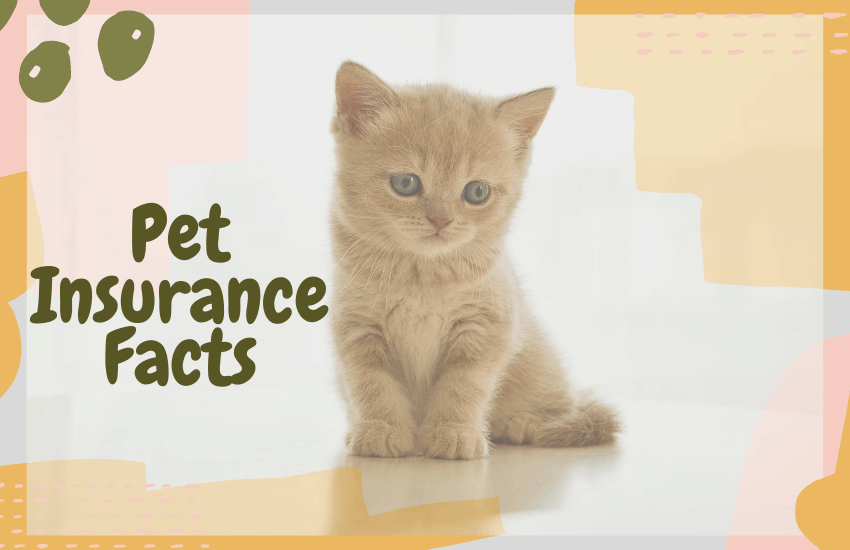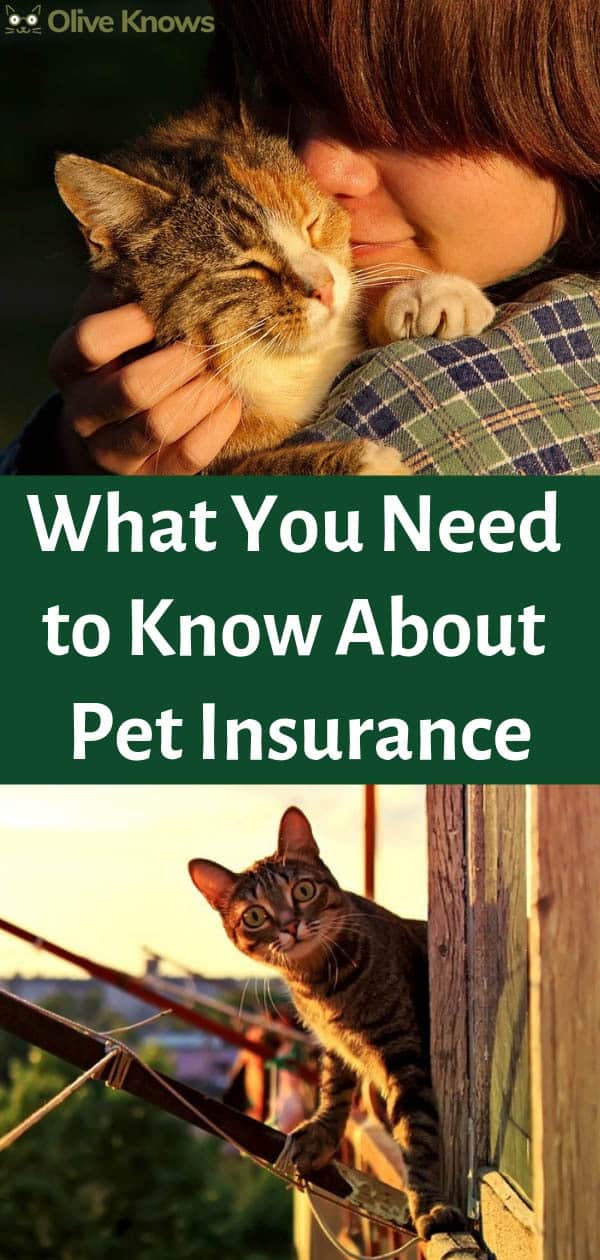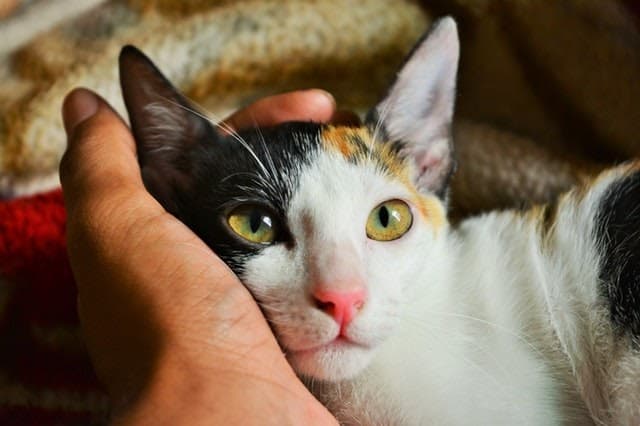
I adopted my first kitten, Lou, about four years ago. In the first week after bringing her home, I took her to the vet for a wellness exam and vaccines.
While I was there, the veterinarian gave me a packet with all sorts of useful information about taking care of a kitten.
In the packet, there was also a brochure for pet insurance, which I had never heard of before. I gave the brochure a once over but set it aside and didn’t really think about it again.

Cut to two and half years later; Lou began to suffer from chronic constipation and had to hospitalized twice within one month. Each visit lasted about three days and while she was at the vet, she had to have multiple x-rays and procedures.
So, while I was extremely worried about Lou and whether or not her bouts of constipation would lead to further health issues and even surgery, I was also feeling the financial strain of those two stays at the animal hospital. It was then that I really started to wonder if I should have paid more attention to that pet insurance brochure.

Table of Contents
What Is Pet Insurance?
It may seem that pet insurance is a fairly new concept, but the truth is it has been around a lot longer than you may think. The first instance of pet insurance was in 1890, but it wasn’t quite like it is today. Instead of covering domestic pets like cats and dogs, it was created to cover livestock such as horses and cows. It wasn’t until 1924 that the first domestic animal was insured when a policy was approved for a dog in Sweden.
What exactly is pet insurance? In a nutshell, pet insurance is used to alleviate some of the financial burdens that come from caring for a pet. Policies can vary but generally pet insurance is used to provide a cushion for unexpected expenses from sudden illness or injury.
Since pet insurance covers illness and injury like health insurance does for humans, you might expect it to work the same way. While that’s sort of true, pets are viewed as property in the eyes of the insurance industry. So even though we love our pets like family, their insurance coverage and the corresponding processes aren’t quite like ours.
How Pet Insurance Works
Using pet insurance is a pretty simple process, though how it works may vary slightly in levels of coverage and from provider to provider. If a recent trip to the vet is covered by your policy, you will (most often) pay for the services upfront at your veterinarian’s office. Once you’ve paid the bill in full and retained a receipt, simply fill out the claim form and send it and the receipt to your pet insurance provider. Once they’ve approved the claim, they will cut a check to reimburse you.
The Pros of Pet Insurance
If a cat parent is willing to spend money on an insurance premium for their furbaby, they want to know their money is being put to good use. Like any form of insurance, there are upsides and downsides to coverage and policies. Knowing what you’re getting into from the getgo is a good way to confirm that pet insurance is going to meet your expectations. Coverage options can vary depending on provider and location but there are some definite positive aspects when it comes to pet insurance.
There Are No Networks
Unlike health insurance that operates on an “in-network” and “out-of-network” structure, pet insurance offers more freedom. As long as your veterinarian of choice is licensed, the pet insurance provider doesn’t set any limitations on which veterinarian to use. This is a great feature for pet parents that have a favorite veterinarian or live in a small town where the options are limited.
Relatively Inexpensive
Contrary to popular belief, the cost of pet insurance is very affordable. Of course, the cost will vary depending on some key factors such as location, breed, age, and prior health concerns. The two most commonly insured animals are cats and dogs, though some policies will insure other species, too. Cat parents have the added benefit of a lower cost for insurance and can find policies for as little as $10 a month per cat.
Easy to Understand Policies
The pet insurance policies provided are generally very straightforward and easy to understand. This is another great benefit when it comes to keeping your cat healthy and keeping vet costs at a minimum. With such simple policies and clearly defined levels of coverage, cat parents don’t have to worry about misunderstanding coverage, out-of-pocket expenses, or insurance deductibles and limits.
The Cons of Pet Insurance
There are a lot of advantages to having pet insurance to help with any unexpected costs if your pet has an accident or gets sick. It’s safe to say there are some disadvantages too. When it comes to deciding on whether or not pet insurance is right for you and your pet, it is important to look at the downsides as well as the benefits.
Upfront Costs
One of the biggest downsides to pet insurance is the claims process. When it comes to health insurance for humans, the billing process is pretty straightforward. Generally, our chosen health care provider will first bill the insurance provider for any health services we have used.
Once the bill has been processed by our insurance company, our health care provider will send us a bill for any portion of the service our insurance didn’t cover. This process definitely has its benefits, but unfortunately, that’s not how pet insurance works.
Instead, pet parents are required to pay the bill in full up front and submit a claim to their pet insurance provider for reimbursement. In instances where the bill is pretty hefty, this can be a burden, especially since getting reimbursed can take a while. Luckily, there are often options to help with unexpected expenses like this, such as a CareCredit card or payment plans through your veterinarian’s office.
Not Everything is Covered by Pet Insurance
Not all pet insurance policies are created equal. That’s why one of the most important reasons to shop around for pet insurance is to compare levels of coverage. Some policies are designed to take care of the big stuff like emergencies, whereas others are designed to help ease the financial burden of vet bills. An example of a policy that doesn’t cover preventative care such as dental cleanings, wellness exams or vaccines are the policies offered through PetPlan.
Another thing to look out for when it comes to pet insurance coverage is whether or not the policy will cover pre-existing conditions. However, there are some cases where a provider will make an exception. If your cat has a pre-existing illness that is curable, it is possible to still get coverage, but it will depend on the provider and their policies. If your provider does make an exception, be prepared to pay a higher premium.
It may come as a surprise, but some providers have breed restrictions and won’t offer coverage to certain breeds of cats. One of the most expensive cat breeds to ensure are Abyssinian cats because they have a higher risk of developing kidney failure along with problems with their teeth, knees, and eyes. As some breeds are more prone to illness than others, some insurance companies choose not to insure them at all. If your cat is a breed known to have health problems, it’s a good idea to ensure her breed isn’t on the restricted list.

Deductibles
Just like health insurance plans for humans, pet insurance providers also require their users to meet a deductible. Deductible amounts will vary by provider and plan and can range from as low as $100 to as high as $1000. The deductible for any policy should be a deciding factor when it comes to selecting a pet insurance policy. If you’ve got a plan that doesn’t cover preventative health costs such as vaccines or spaying/neutering and has a high deductible, you might be better off with a different policy.
Read More: How to Find the Best Cat Insurance
Where to Find Pet Insurance
The number of providers offering pet insurance has been on the rise in recent years, which is great news considering veterinary care is one of the highest costs in North America. It’s estimated vet care costs pet parents around $15.25 billion every year. With such a high number, it is no surprise pet parents are looking for ways to cut costs and still be able to give their pets proper care. In recent years, pet insurance has become so popular that some employers are offering it as part of their benefits packages for employees.
If you’re not lucky enough to have pet insurance offered through your employer, there are plenty of other places to get it. In fact, some of the agencies that offer mainstream coverage such as auto and renters insurance are now offering pet insurance too. Even if you do have the option of a discounted pet insurance plan through an employer, the best way to pick a provider is to shop around for quotes and compare coverage and costs.
Some of the top rated providers for pet insurance are:
Whether or not you choose to get pet insurance can depend on your budget, the overall health of your cat and whether or not you think the cost will be justifiable should something happen. If you do consider investing in pet insurance, make sure to do your due diligence. Shop around for the best policies and coverage and rest easy knowing your furry friend is covered if an unexpected illness or injury occurs.
Further Reads on Pet Insurance
- Petplan vs Embrace Insurance: Which Will You Prefer?
- Petplan vs Healthy Paws Insurance Compared
- How to Find the Best Cat Insurance


Leave a Reply